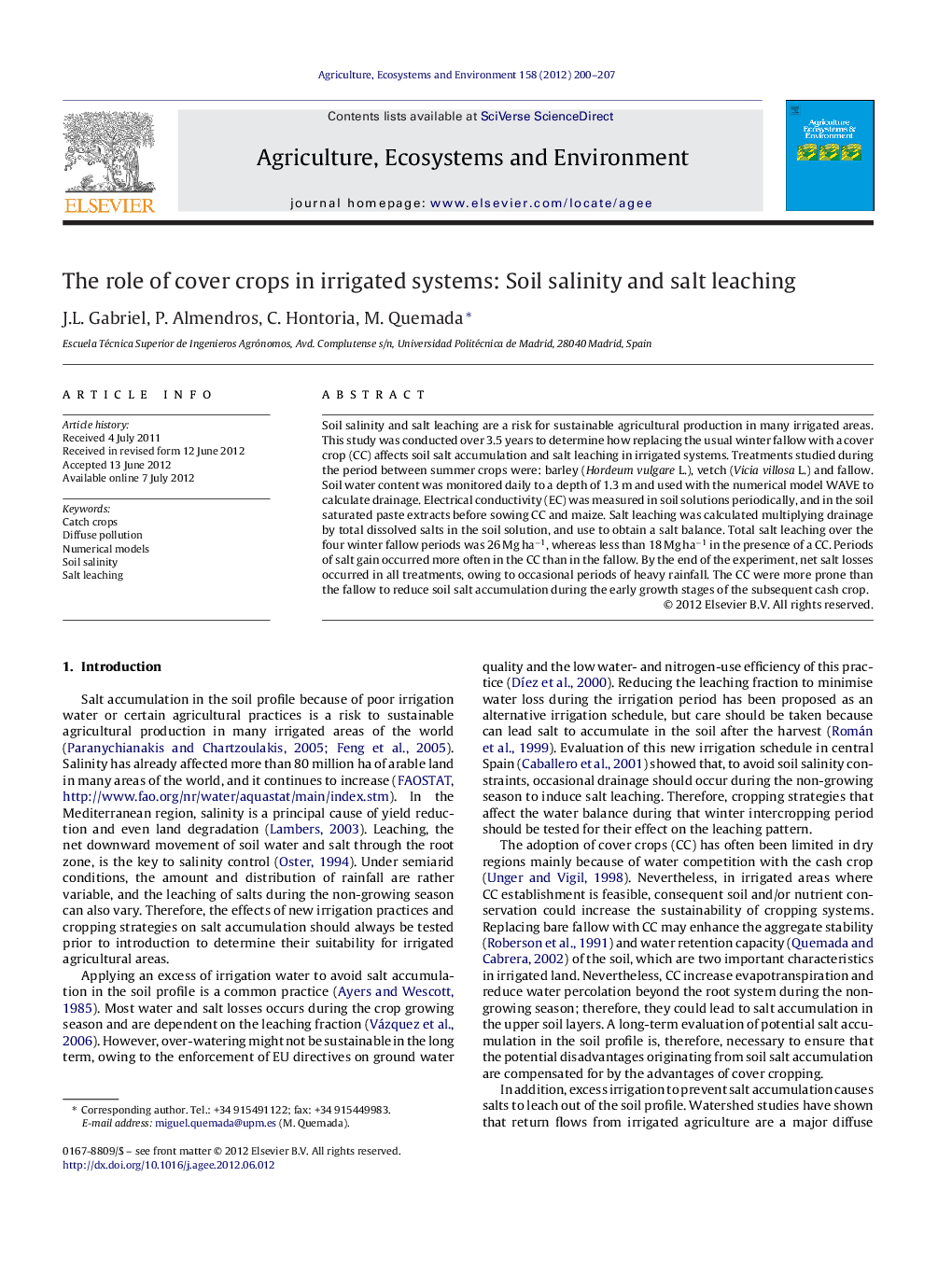| Article ID | Journal | Published Year | Pages | File Type |
|---|---|---|---|---|
| 2414507 | Agriculture, Ecosystems & Environment | 2012 | 8 Pages |
Soil salinity and salt leaching are a risk for sustainable agricultural production in many irrigated areas. This study was conducted over 3.5 years to determine how replacing the usual winter fallow with a cover crop (CC) affects soil salt accumulation and salt leaching in irrigated systems. Treatments studied during the period between summer crops were: barley (Hordeum vulgare L.), vetch (Vicia villosa L.) and fallow. Soil water content was monitored daily to a depth of 1.3 m and used with the numerical model WAVE to calculate drainage. Electrical conductivity (EC) was measured in soil solutions periodically, and in the soil saturated paste extracts before sowing CC and maize. Salt leaching was calculated multiplying drainage by total dissolved salts in the soil solution, and use to obtain a salt balance. Total salt leaching over the four winter fallow periods was 26 Mg ha−1, whereas less than 18 Mg ha−1 in the presence of a CC. Periods of salt gain occurred more often in the CC than in the fallow. By the end of the experiment, net salt losses occurred in all treatments, owing to occasional periods of heavy rainfall. The CC were more prone than the fallow to reduce soil salt accumulation during the early growth stages of the subsequent cash crop.
► Cover crops reduced salt leaching in irrigated systems. ► Periods of salt gain occurred more often in the cover crops than in the fallow. ► After 3.5 years, net salt losses occurred in the fallow and the cover crops. ► Cover crops can reduce soil salt accumulation at the subsequent cash crop planting.
